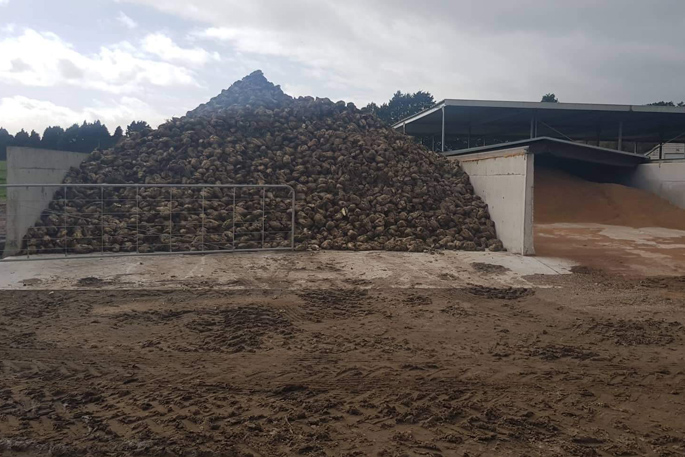Herd-owning Reporoa sharemilker Alastair Neville is singing the praises of sugar beet as a winter crop.
Having recently moved to autumn calving, Alastair introduced sugar beet to the feed mix for the first time this season. “It was a good option because of its high dry matter content and the ease of managing lifted beet,” says Alastair.
The 350-cow herd has responded really well to the introduction of sugar beet, and Alastair will definitely be planting it again next season.
“It offers much-needed energy in winter months when there’s less grass around, and less goodness in grass. We’ve had good results so far.”
Alastair started feeding beet pre-calving, which helped limit loss in body condition. Once calving started, there was a 0.1 per kgms increase in production across the herd, says Alastair.
Horror stories about cows breaking through fences and over feeding led Alastair to feed lifted beet, rather than feeding beet in-ground.
“This approach minimises nutrient loading in crop paddocks, and when properly managed, lifted beet stores extremely well, lasting up to three months,” says Alastair. “But, unlike maize, there’s no storage infrastructure cost, which is good.”
The cropping regime targets poor performing grass paddocks, which are first planted in maize, followed by sugar beet, before being planted with oats or a similar annual, and finally kale in spring.
“One of the challenges with beet is weeds, and the potential to build up a weed seed bank, so kale helps put nutrients back in the soil, and helps clean up the weed problem.
“Crop establishment is especially important for beet, and the best advice I got was to get in the mindset of a market gardener. Attention to detail is so important with beet growing. A fine seed bed is critical, as is timing of your spray and fertiliser.”
Alastair says his cost of growing sugar beet this season was at 14c per kgDM compared to kale at 13.35c per kgDM.
“Sure kale is a cheaper and easier crop to grow, but we wanted to grow sugar beet for its feed value. There’s not a lot of grass around in winter and high energy food like beet fills the gap. Next year we’ll be working on increasing the yield.
“Because of the positive impact on production, beet has also allowed us to maximise income as we’ve increased production during the winter milk premium payment bracket.
“Sugar beet might not work for everyone, but if it suits your farming system, it’s worth the effort.”




0 Comments
Leave a Comment